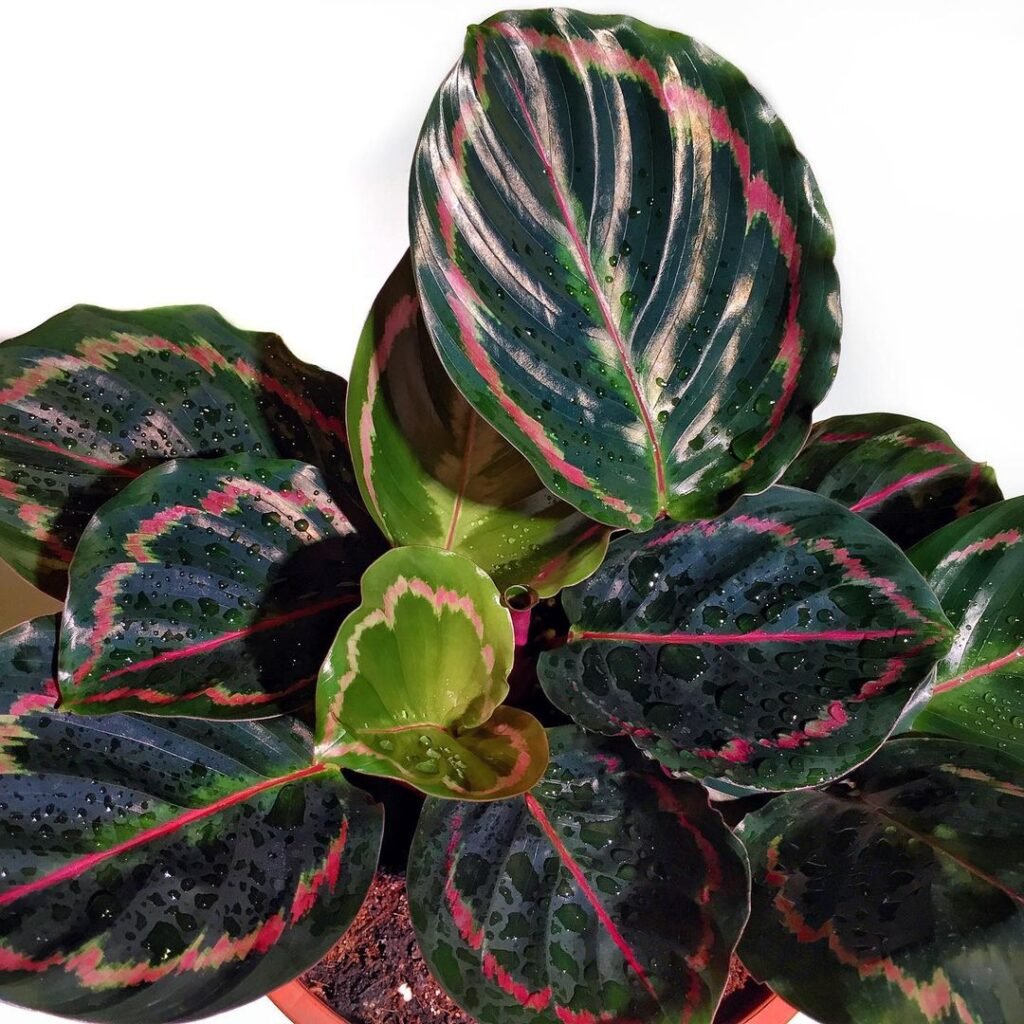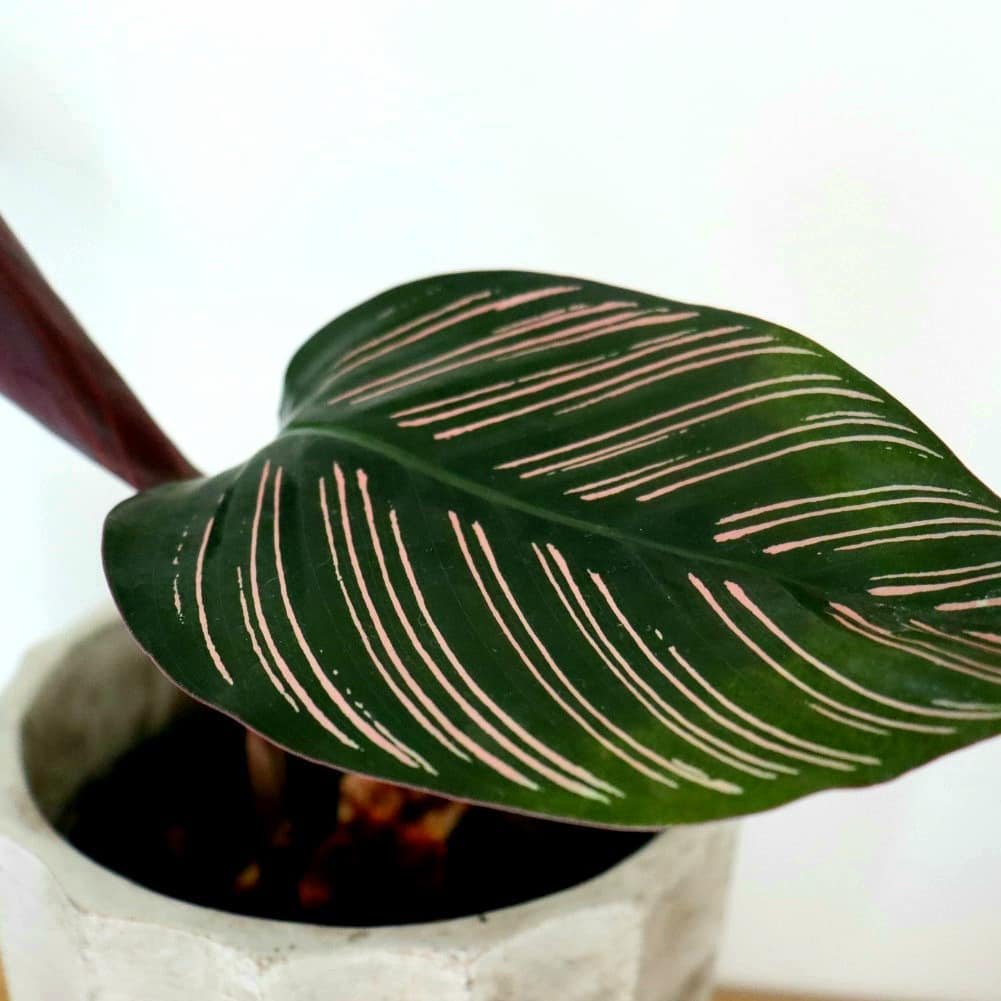Wondering how to keep those pretty Calathea plants alive? This easy guide has all the tips on soil, watering, light, humidity, and more to keep your Calathea thriving.
Calathea plants are some real showstoppers when it comes to houseplants. With those big patterned leaves in vibrant shades of green, pink, purple, and more, they add such a lush, tropical vibe to any room. But let’s be real, these fancy plants can be a bit high-maintenance if you don’t know what you’re doing.
That’s where this guide comes in. I’m breaking down all the care essentials to keep your Calathea looking its best year-round. We’re talking ideal soil, watering, light, humidity, fertilizing, pruning, repotting, pest control – the whole nine yards. Follow along and those striking leaves will be thriving in no time.
Soil It Loves

Calatheas are native to the tropical rainforests of the Americas, so they dig that rich, well-draining soil. A perfect potting mix is an even blend of:
- Peat moss or coir
- Basic potting soil
- Perlite or vermiculite
This gives it that light, airy texture Calatheas crave. You can buy [premixed Calathea soil mixes] (https://www.natureshead.com/products/botanica-houseplant-potting-mix) or whip up your own batch.
Whatever you do, avoid dense, compacted soils. Soggy soil is a one-way ticket to root rot city for these plants. You want that potting mix to feel nice and fluffy.
How to Water
Consistent moisture is key for Calathea, but you don’t want it sopping wet either. The sweet spot is keeping that soil lightly moist at all times.
Get into the habit of checking the soil every few days with your finger. Once that top inch or two is drying out, it’s time for a drink. If you can, use filtered, distilled, or rainwater instead of tap, which has fluoride and salts that can bother Calatheas. Room temp water is also better than ice cold.
When you do water, go slowly and evenly until you see it draining out the bottom. Then dump out any excess in the saucer or cachepot so it’s not sitting in it.
Not enough water leads to crispy brown leaf tips and edges. But soaking it leads to yellowing leaves and problematic root rot.
The Light It Craves

Calatheas love a good bright, indirect light situation. I’m talking nice filtered sunlight, not harsh direct rays beaming down on those leaves.
An east or north-facing window works great. You can also set them a few feet back from a south or west window if you have some sheer curtains filtering that light.
Too much direct sun is a surefire way to scorch and bleach out those beautiful leaf patterns. On the flip side, too little light and your Calathea will get leggy and stretched out while losing its vibrant colors.
Shoot for giving it 6-8 hours of bright, indirect light per day if you can. And be sure to rotate your plant weekly to keep that light hitting it evenly.
Humidity, humidity, humidity

This is a big one for Calathea. These tropicals absolutely need that humid air to be truly happy campers. We’re talking 50-60% humidity at minimum.
Let’s be honest, most homes struggle to hit those levels year-round without some help. Running a cool mist humidifier near your Calathea can really help boost humidity. Pebble trays, grouping plants together, and misting also helps increase the moisture in the air around it.
Dry air leads to sad, crispy brown leaf tips and edges. The foliage may also start losing its vibrant patterns and colors if humidity stays too low.
Feeding Schedule

Go ahead and feed your Calathea every month in spring, summer, and fall with a balanced liquid fertilizer diluted to half strength. This gives it an added nutrient boost during its prime growing periods.
Any 3-1-2 ratio fertilizer will work. You can also use liquid kelp, fish emulsion, or worm casting fertilizers.
No need to feed in winter though when its growth naturally slows. Oh, and always water first before applying any fertilizer to avoid burning those roots.
Pruning It Back

Don’t be afraid to prune off any dead, damaged, or discolored leaves by snipping them off at the base. This allows the plant to refocus its energy on putting out fresh new growth.
You can also prune back any scraggly, stretched out stems to help promote a fuller, bushier shape.
Just be careful not to go too crazy and prune away more than 25% of the plant at once. That puts too much stress on your Calathea all at once.
When to Repot

Calatheas are relatively slow growers, but they’ll still need some extra room as they fill out that pot over time.
Get into the habit of repotting every 2-3 years in spring. If you start seeing roots visibly circling the inner edges of the pot, that’s your cue that it’s getting rootbound in there.
When repotting, ditch as much of that old potting mix as you can. You can also trim away any dead or excessively circling roots. Then, repot it up into a new pot just 2-4 inches wider with fresh potting soil.
Dealing With Pests Lots of common houseplant pests like spider mites, mealybugs, and fungus gnats can take a liking to Calathea too if you’re not careful.
Do regular inspections, quarantining any infested plants ASAP. You can treat with insecticidal soaps, neem oil or other horticulture oils to get things under control.
Following proper watering, humidity and airflow will help prevent lots of pest issues before they start too.
How to Propagate
You can propagate new Calathea plants through division when repotting in spring.
Gently split and separate the rootball into two or more sections, making sure each section has plenty of roots and stems attached.
Then just pot up each division in its own container with fresh potting mix. Water thoroughly and care for them as you normally would to re-establish.
Popular Varieties

There are so many stunning Calathea varieties out there, like:
- Calathea Medallion – Large rose-patterned leaves
- Calathea Rattlesnake Plant – Green leaves with funky elongated markings
- Calathea Makoyana – Dark green leaves with pretty feather-like patterns
- Calathea Musaica – Intricate pink and green geometric patterns
- Calathea Ornata – Pink striped leaves with purple undersides
- Calathea Lancifolia – Tall stems with alternating sword-shaped leaves
While they all have their own unique looks, calatheas generally share those same basic care needs I covered. As long as you’ve got the soil, water, light, and humidity on point, you’ll be set.
With their lush tropical vibes, calatheas make such eye-catching houseplant additions. Put these care tips into practice and those showy leaves will be thriving for years to come. Let me know if any other calathea care questions come up!
Pingback: Exploring the Enchanting World of Blue Flowers
Pingback: Calathea Plants: A Guide to Care, Toxicity & Prayer Plant
Pingback: A Comprehensive Guide to Calathea varieties Gardeners School
Pingback: - Aloe Plants: Comprehensive Guide to Growing Aloes
Pingback: Calathea Roseopicta: How to Plant, Grow and Care
Pingback: How to Grow Stunning Fuchsias in Your Garden - Gardener's School
Pingback: Succulents Care: 5 Steps for Healthy, Thriving Succulents
Pingback: The Black Cherry Tree: A Comprehensive Guide to Growing....
Pingback: From Patio to Plate: The Best Vegetables to Grow in ...
Pingback: Calathea Couture : A Beginner’s Guide to Growing This Striking Houseplant